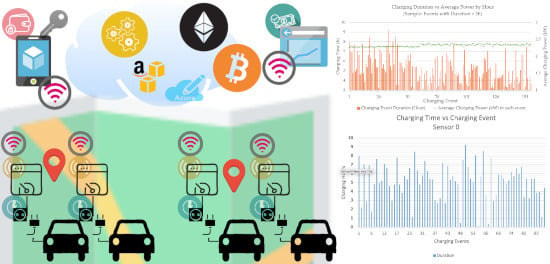IoT and Blockchain Paradigms for EV Charging System
Abstract
:1. Introduction
2. State of the Art
- Decentralization, since we need confirmation from some party of each block transaction without central control;
- Anonymity, since it allows for the authentication of transactions without giving up any personal information;
- Auditability, which is performed based on the fact that each of the transactions is recorded and validated with a timestamp, where users can trace the previous transactions by accessing any node in the distributed network.
3. Proposed Approach—Conceptual Model
- IoT Units. Sensor and power management units that support the interaction with the EV charger, being used to enable or disable it (on/off switch), to measure the amount of power consumed, gather environment temperature and humidity (complementary measures), and to upload all the information to the management unit. Implemented with COTS (commercial off-the-shelf) components, Arduino microcontrollers, actuators and sensors. Depending on the installation requirements, different components can be combined to set up the IoT Unit.
- Mobile App. The element that establishes the interaction between the EV owner and the platform, authenticates the user, starts/stops the charging process, and provides some common operations, such as configuration management, usage dashboards, transactions lists, etc.
- Management Unit. This element is the heart of the platform, providing not only all the backend services to support the required operations, but also the management console for the platform. In the prototype presented in this paper, the management unit was implemented using a Raspberry Pi, which also acts as a Wi-Fi access point, providing network access to the sensor units and to the mobile app, but it could also be implemented using a cloud computing platform.
4. System Implementation
4.1. IoT Unit
4.1.1. Configuration of Variations
4.1.2. Hardware Components
- Arduino R3 Uno Microcontroller (Figure 4a): based on the microcontroller ATmega328P, it has the following characteristics (from the Arduino R3 Uno dataset):
- ○
- 14 digital input/output pins (the first 2 are commonly used for serial RX/TX (Receive and Transmit), 6 can be used as pulse-width modulation (PWM) outputs that mimic an analogue output) and 6 analogue input pins (A0–A6).
- ○
- 16 MHZ clock speed (memory: flash, 32 K; SRAM, 2 K; EEPROM, 1 K).
- ○
- USB type B connection, ICSP Header.
- ○
- Power input 9 V (operating voltage 5 V), built-in LED, reset button.
- Sparkfun Wi-Fi Arduino Shield (based on ESP8266) (Figure 4b): manufactured by Sparkfun this Arduino shield is commonly used to connect the Arduino microcontroller to a Wi-Fi network and use the “standard” internet protocols (TCP or UDP).
- Arduino Ethernet Shield (based on Wiznet W5100) (Figure 4c): designed for embedded applications where ease of integration, stability, performance and cost are required, as well as ease of internet connection without the need for an operating system to implement. This chip complies with IEEE 802.3 10Base-T and 802.3u 1000Base-TX standards and includes a TCP/IP hardwired stack, supports up to four simultaneous socket connections, integrated MAC and PHY Ethernet, and 16 kilobytes of internal buffer for data transmission. The standard RJ45 connection allows speeds from 10 to 100 megabytes.
- Non-Intrusive Current Sensor SCT-013-000 (non-intrusive) (Figure 4d): a non-intrusive sensor used to measure the current passing through a conductor without the need to cut or modify the conductor itself. The measurements are collected from the electromagnetic induction, which is proportional to the intensity of the current passing through the conductor. This sensor collects measurements up to 100 A, outputting at 50 mA. In terms of accuracy, it may deviate from 1% to 2% of the actual value.
- Intrusive Current Sensor 20 A (based on ACS712) (Figure 4e): based on ACS712 this intrusive Hall effect current sensor can be used to measure currents between −20 A and +20 A, with an output ratio of 100 mV/A.
- Power Switch 10 A (based on SRD-05VDC-SL-C) (Figure 4f): a mechanical relay which operates a switch. Powered by the standard Arduino 5 Vcc, it has a control line (+5 V) that when powered, establishes a connection between the terminals common (C) and normally open (NO). The used part also includes a small LED which is enabled when the circuit between the terminals C and NO is established.
- Temperature and Humidity Sensor (DHT11 based) (Figure 4g): from DFRobot, can work from 0 to 50 °C and humidity from 20% to 90%, and has low power consumption, with a precision of 2 °C.
- RFID/NFC Reader/Writer (PN532) (Figure 4h): has several wireless capabilities, it can be used to read and write RFID and to exchange data with Near Field Communication (NFC) enabled devices.
4.1.3. IoT Unit Software
- When the device starts, it checks if it contains configuration information stored in the EEPROM. In this case, it will automatically go to step 3 (if the sensor is started with the reset button pressed the EEPROM configuration is deleted, Figure 4i).
- In the absence of a stored configuration, the device contacts the server to obtain the configuration data, receiving the following parameters in response: (a) Data transmission frequency; (b) sampling frequency; (c) target server; (d) IP configuration (static or dynamic); and (e) time server. To identify the sensor together with the central application, the sensor Id is read from the dip-switches shown in Figure 4i, allowing a total of 64 (26) sensors configured to obtain configuration.
- After reading the configuration data, the device is ready for operation.
4.2. Mobile App
4.2.1. EV Charging Process (Automatic vs. Manual Starting Process)
4.2.2. General App Features
4.2.3. Software Architecture
- View, implemented with XAML (eXtensible Application Markup Language), a declarative language used to design and structure the user interface.
- View-Model is the binding element that intermediates the relationship between the View and the Model, mapping the information and actions between both elements.
- Model is the representation of the data.
- Rest Adapter since the mobile app entirely relies on services provided by the management unit, this component acts as a proxy between the mobile application and the services exposed. Due to the financial nature of transactions, the information exchanged between the mobile app and the central management unit uses a secure Hypertext Transfer Protocol Secure [38] (HTTPS) connection (secured by a server certificate) and Hypertext Transfer Protocol [39] (HTTP) standard authentication mechanisms. Stronger authentication schemes can be supported by use of client certificates to authenticate the mobile app requests on the server; however, this was not considered for the current implementation to avoid the complexity of introducing a Public Key Infrastructure (PKI) in the platform.
- Local Storage consists of a small information repository to store local configuration data in the mobile device.
4.3. Management Unit
4.3.1. Hardware and Network Infrastructure
4.3.2. Software and Services Infrastructure
4.3.3. Management Services
- Configuration: Provides a set of services required to configure the EV platform, allowing the user to define several platform parameters, such as the existing sensors and their configuration (e.g., network configuration, maximum current, accounting frequency, measure period, etc.), as well as the groups of sensors (sensors inside the same group, maximum load per group, etc.).
- 3A (Authentication, Authorization, Auditing): This module has a central role in the entire platform. It is responsible for centralizing all the operations related to user/system authentication (“who is who“), authorization (“what can do”) and auditing (“what was done”). Apart from implementing the set of operations to manage the user access to the platform, it also implements the implicit authentication [6] to validate the charging request automatically, based on the current user’s usage pattern.
- Charge Monitor: This module collects and processes all information generated from the installed sensors to update the EV charging records and detect the end of the charging events, as well as any anomalies on the charging process (e.g., exceeding the nominal current, temperature, charging time), and triggering eventual notifications when required. This module also collects the user’s usage pattern to estimate the power needs for the current charging process, as well as estimate the leave time of the EV from the charging plug, if that information is not provided explicitly by the user.
- Charge Management: If the installation has the capability to enable or disable the EV charging process, by the use of network-controlled charging devices or by the use of charging switches attached to the sensor unit, the module enables or disables de-charging of the EV, aiming to properly distribute the available charging windows between all the EVs connected to the charging group, based on the charging requirements and the amount of time that the vehicle will be connected to the charging device and using the information provided explicitly by the user or inferred by the platform based on the users usage pattern.
- Notification Services: This module provides all the notification related services to the platform, routing the system-generated notifications to users that had subscribed to that notification (i.e., vehicle charged, abnormal charge pattern, etc.)
- Transaction/Blockchain: This module supports all the “financial” related operations, for instance, it records the changing event in the blockchain ledger; if the installation supports the charge management process (described previously), it allows the platform managers to transfer “charging tokens” to the user’s wallet (if not using a public crypto-currency network); it monitors the reception of user’s transferred credit to start the charging process; and it returns the unused credit to the user’s wallet. It also provides minimal reporting capabilities to allow the financial management and analysis of the platform usage.
- Service Layer: Acts as a mapping service, translating the external representation of the information to the internal representation.
- Business Layer: All the application behaviour level is defined on this layer, and any interaction between layers made exclusively through the interface provided at this level.
- Persistence Layer: This layer maps the internal representation of the information to representation used by the database engine.
4.3.4. Web Application
4.3.5. Blockchain Implementation and Integration
- Using the mobile app, the user registers/creates his account on the blockchain network (if using public crypto-currency infrastructure, the user creates his crypto-currency wallet).
- Using real money, the user buys EV charging tokens from the EV platform management, referring to the web interface of the Management Unit. The charging tokens are transferred from the platform wallet to the user wallet through a blockchain network (if using a public crypto-currency the user buys the currency on the market).
- Using the mobile app, the user sends charging tokens from his wallet to the EV platform wallet, defining the maximum amount to spend and the maximum time that the vehicle will be connected to the plug (used to optimize the power distribution). The Management Unit receives the transfer from the network and triggers the power management unit to start the charging process, which may not be immediate due to the optimization of the power distribution between the used chargers.
- The Management Server receives the power measures from the charger, stopping the charging process when the maximum amount is reached, the maximum charging time is reached, or when the vehicle is removed from the charger (detected by a reduction of the consumed power). If the charging process is interrupted, the remaining amount is returned by the Management Server to the user wallet using the blockchain network.
5. Case Study at a Condominium
6. Future Implication of Mobile Devices as a Payment System for EV Charging
7. Conclusions
Author Contributions
Funding
Conflicts of Interest
References
- Al-Fuqaha, A.; Guizani, M.; Mohammadi, M.; Aledhari, M.; Ayyash, M. Internet of things: A survey on enabling technologies, protocols, and applications. IEEE Commun. Surv. Tutor. 2015, 17, 2347–2376. [Google Scholar] [CrossRef]
- Stat of the Week: Percent of Households That Rent By Country. Available online: https://evadoption.com/stat-of-the-week-percent-of-households-that-rent-by-country/ (accessed on 21 May 2019).
- Axsen, J.; Goldberg, S.; Bailey, J.; Kamiya, G.; Langman, B.; Cairns, J.; Wolinetz, M.; Miele, A. Electrifying Vehicles: Insights from the Canadian Plug-in Electric Vehicle Study; Simon Fraser University: Vancouver, BC, Canada, 2015. [Google Scholar]
- Lopez-Behar, D.; Tran, M.; Mayaud, J.R.; Froese, T.; Herera, O.; Merida, W. Putting electric vehicles on the map: A policy agenda for residential charging infrastructure in Canada. Energy Res. Soc. Sci. 2019, 50, 29–37. [Google Scholar] [CrossRef]
- Ismail, B.I.; Goortani, E.M.; Ab Karim, M.B.; Tat, W.M.; Setapa, S.; Luke, J.Y. Evaluation of docker as edge computing platform. In Proceedings of the 2015 IEEE Conference on Open Systems (ICOS 2015), Melaka, Malasya, 24–26 August 2015. [Google Scholar]
- Ferreira, J.C.; Monteiro, V.; Afonsom, J.L. Vehicle-to-Anything Application (V2Anything App) for electric vehicles. IEEE Trans. Ind. Inform. 2014, 10, 1927–1937. [Google Scholar] [CrossRef]
- Bo, C.; Zhang, L.; Li, X.-Y.; Huang, Q.; Wang, Y. Silentsense: Silent user identification via touch and movement behavioral biometrics. In Proceedings of the 19th Annual International Conference on Mobile Computing & Networking (MobiCom ’13), Miami, FL, USA, 30 September–4 October 2013; ACM: New York, NY, USA, 2013; pp. 187–190. [Google Scholar] [CrossRef]
- Patel, V.M.; Chellappa, R.; Chandra, D.; Barbello, B. Continuous User Authentication on Mobile Devices: Recent progress and remaining challenges. IEEE Signal Process. Mag. 2016, 33, 49–61. [Google Scholar] [CrossRef]
- De Luca, A.; Hang, A.; Brudy, F.; Lindner, C.; Hussmann, H. Touch me once and iknow it’s you!: Implicit authentication based on touch screenpatterns. In Proceedings of the SIGCHI Conference on Human Factors in Computing Systems (CHI ’12), Austin, TX, USA, 5–10 May 2012; ACM: New York, NY, USA, 2012; pp. 987–996, ISBN 978-1-4503-1015-4. [Google Scholar] [CrossRef]
- Feng, T.; Liu, Z.; Kwon, K.-A.; Shi, W.; Carbunar, B.; Jiang, Y.; Nguyen, N. Continuous mobile authentication using touchscreen gestures. In Proceedings of the 2012 IEEE Conference on Technologies for Homeland Security (HST 2012), Waltham, MA, USA, 13–15 November 2012; pp. 451–456, ISBN 978-1-46732709-1. [Google Scholar] [CrossRef]
- Jakobsson, M.; Shi, E.; Golle, P.; Chow, R. Implicit authentication for mobile devices. In Proceedings of the 4th USENIX Conference on Hot Topics in Security (HotSec’09), Montreal, QC, Canada, 10–14 August 2009; USENIX Association: Berkeley, CA, USA, 2009; p. 9. [Google Scholar]
- Sae-Bae, N.; Ahmed, K.; Isbister, K.; Memon, N. Biometric-rich gestures: A novel approach to authentication on multi-touch devices. In Proceedings of the SIGCHI Conference on Human Factors in Computing Systems (CHI ’12), Austin, TX, USA, 5–10 May 2012; ACM: New York, NY, USA, 2012; pp. 977–986, ISBN 978-1-4503-1015-4. [Google Scholar] [CrossRef]
- Frank, M.; Biedert, E.M.R.; Martinovic, D.S.I. Touchalytics: On the applicability of touchscreen input as a behavioral biometric for continuous authentication. IEEE Trans. Inf. Forensics Secur. 2013, 8, 136–148. [Google Scholar] [CrossRef]
- Nakamoto, S. Bitcoin: A Peer-to-Peer Electronic Cash System. Available online: https://bitcoin.org/bitcoin.pdf (accessed on 8 July 2019).
- A Next-Generation Smart Contract and Decentralized Application Platform. Available online: https://github.com/ethereum/wiki/wiki/White-Paper (accessed on 8 July 2019).
- Panarello, A.; Tapas, N.; Merlino, G.; Longo, F.; Puliafito, A. Blockchain and IoT integration: A systematic survey. Sensors 2018, 18, 2575. [Google Scholar] [CrossRef] [PubMed]
- Pop, C.; Antal, M.; Cioara, T.; Anghel, I.; Sera, D.; Salomie, I.; Raveduto, G.; Ziu, D.; Croce, V.; Bertoncini, M. Blockchain-based scalable and tamper-evident solution for registering energy data. Sensors 2019, 19, 3033. [Google Scholar] [CrossRef] [PubMed]
- Erdin, E.; Cebe, M.; Akkaya, K.; Solak, S.; Bulut, E.; Uluagac, S. Building a Private Bitcoin-based Payment Network among Electric Vehicles and Charging Stations. In Proceedings of the 2018 International Conference in Blockchain, Xi’an, China, 10–12 December 2018. [Google Scholar]
- Ferreira, J.C.; Martins, A.L. Building a community of users for open market energy. Energies 2018, 11, 2330. [Google Scholar] [CrossRef]
- Sanseverino, E.R.; Silvestre, M.L.D.; Gallo, P.; Zizzo, G.; Ippolito, M. The blockchain in microgrids for transacting energy and attributing losses. In Proceedings of the 2017 IEEE International Conference on Internet of Things (iThings) and IEEE Green Computing and Communications (GreenCom) and IEEE Cyber, Physical and Social Computing (CPSCom) and IEEE Smart Data (SmartData), Exeter, UK, 21–23 June 2017; pp. 925–930. [Google Scholar]
- Ferreira, J.C.; Monteiro, V.; Afonso, J.L. Smart electric vehicle charging system. In Proceedings of the 2011 IEEE Intelligent Vehicles Symposium (IV 2011), Baden, Germany, 5–9 June 2011. [Google Scholar]
- Ferreira, J.C.; Afonso, J.L. EV-cockpit—Mobile personal travel assistance for Electric vehicles. In Advanced Microsystems for Automotive Applications 2011; Springer: Berlin/Heidelberg, Germany, 2011. [Google Scholar]
- Ferreira, J.C.; Monteiro, V.; Afonso, J.; Afonso, J.L. An energy management platform for public buildings. Electronics 2018, 7, 294. [Google Scholar] [CrossRef]
- Pustišek, M.; Kos, A.; Sedlar, U. Blockchain based autonomous selection of electric vehicle charging station. In Proceedings of the 2016 International Conference on Identification, Information and Knowledge in the Internet of Things (IIKI), Beijing, China, 20–21 October 2016; pp. 217–222. [Google Scholar] [CrossRef]
- Liu, C.; Chai, K.K.; Zhang, X.; Lau, E.T.; Chen, Y. Adaptive blockchain-based electric vehicle participation scheme in smart grid platform. IEEE Access 2018, 6, 25657–25665. [Google Scholar] [CrossRef]
- Thakur, S.; Breslin, J.G. Electric vehicle charging queue management with blockchain. In Internet of Vehicles. Technologies and Services Towards Smart City. IOV 2018. Lecture Notes in Computer Science; Skulimowski, A., Sheng, Z., Khemiri-Kallel, S., Cérin, C., Hsu, C., Eds.; Springer: Cham, Switzerland, 2018; Volume 11253, pp. 249–264. [Google Scholar]
- Ferreira, J.C. Android as a Cloud Ticket Validator. In Proceedings of the International Conference on Cloud Ubiquitous Computing Emerging Technologies (CUBE 2013), Pune, India, 15–16 November 2013. [Google Scholar] [CrossRef]
- Dahlberg, T.; Guo, J.; Ondrus, J. A critical review of mobile payment research. Electron. Commer. Res. Appl. 2015, 14, 265–284. [Google Scholar] [CrossRef]
- Higgins, S. Why a German Power Company is Using Ethereum to Test Blockchain Car Charging. CoinDesk. 7 March 2016. Available online: http://www.coindesk.com/german-utility-company-turns-to-blockchain-amid-shifting-energy-landscape/ (accessed on 8 July 2019).
- Allison, I. RWE and Slock.it—Electric Cars Using Ethereum Wallets Can Recharge by Induction at Traffic Lights. International Business Times UK. 22 Feburary 2016. Available online: http://www.ibtimes.co.uk/rwe-slock-it-electric-cars-using-ethereum-wallets-can-recharge-by-inductiontraffic-lights-1545220 (accessed on 8 July 2019).
- Kang, J.; Yu, R.; Huang, X.; Maharjan, S.; Zhang, Y.; Hossain, E. Enabling localized peer-to-peer electricity trading among plug-in hybrid electric vehicles using consortium blockchains. IEEE Trans. Ind. Inf. 2017, 13, 3154–3164. [Google Scholar] [CrossRef]
- Garg, S.; Kaur, K.; Kaddoum, G.; Gagnon, F.; Rodrigues, J.J. An efficient blockchain-based hierarchical authentication mechanism for energy trading in V2G environment. arXiv 2019, arXiv:1904.01171. [Google Scholar]
- Liu, D.; Li, D.; Liu, X.; Ma, L.; Yu, H.; Zhang, H. Research on a cross-domain authentication scheme based on consortium blockchain in V2G networks of smart grid. In Proceedings of the 2nd IEEE Conference on Energy Internet and Energy System Integration (EI2), Beijing, China, 20–22 October 2018. [Google Scholar]
- Aitzhan, N.Z.; Svetinovic, D. Security and privacy in decentralized energy trading through multi-signatures, blockchain and anonymous messaging streams. IEEE Trans. Dependable Secur. Comput. 2018, 15, 840–852. [Google Scholar] [CrossRef]
- Mengelkamp, E.; Notheisen, B.; Beer, C.; Dauer, D.; Weinhardt, C. A blockchain-based smart grid: Towards sustainable local energy markets. Comput. Sci. Res. Develop. 2018, 33, 207–214. [Google Scholar] [CrossRef]
- Münsing, E.; Mather, J.; Moura, S. Blockchains for decentralized optimization of energy resources in microgrid networks. In Proceedings of the IEEE Conference on Control Technology and Applications (CCTA 2017), Kohala Coast, HI, USA, 27–30 August 2017; pp. 2164–2171. [Google Scholar]
- Presentation Model. Available online: https://martinfowler.com/eaaDev/PresentationModel.html (accessed on 21 May 2019).
- HTTP Over TLS. Available online: https://tools.ietf.org/html/rfc2818 (accessed on 21 May 2019).
- Hypertext Transfer Protocol (HTTP/1.1): Semantics and Content. Available online: https://tools.ietf.org/html/rfc7231 (accessed on 21 May 2019).
- Charging Solutions for Your Business. Available online: https://www.allego.eu (accessed on 21 May 2019).
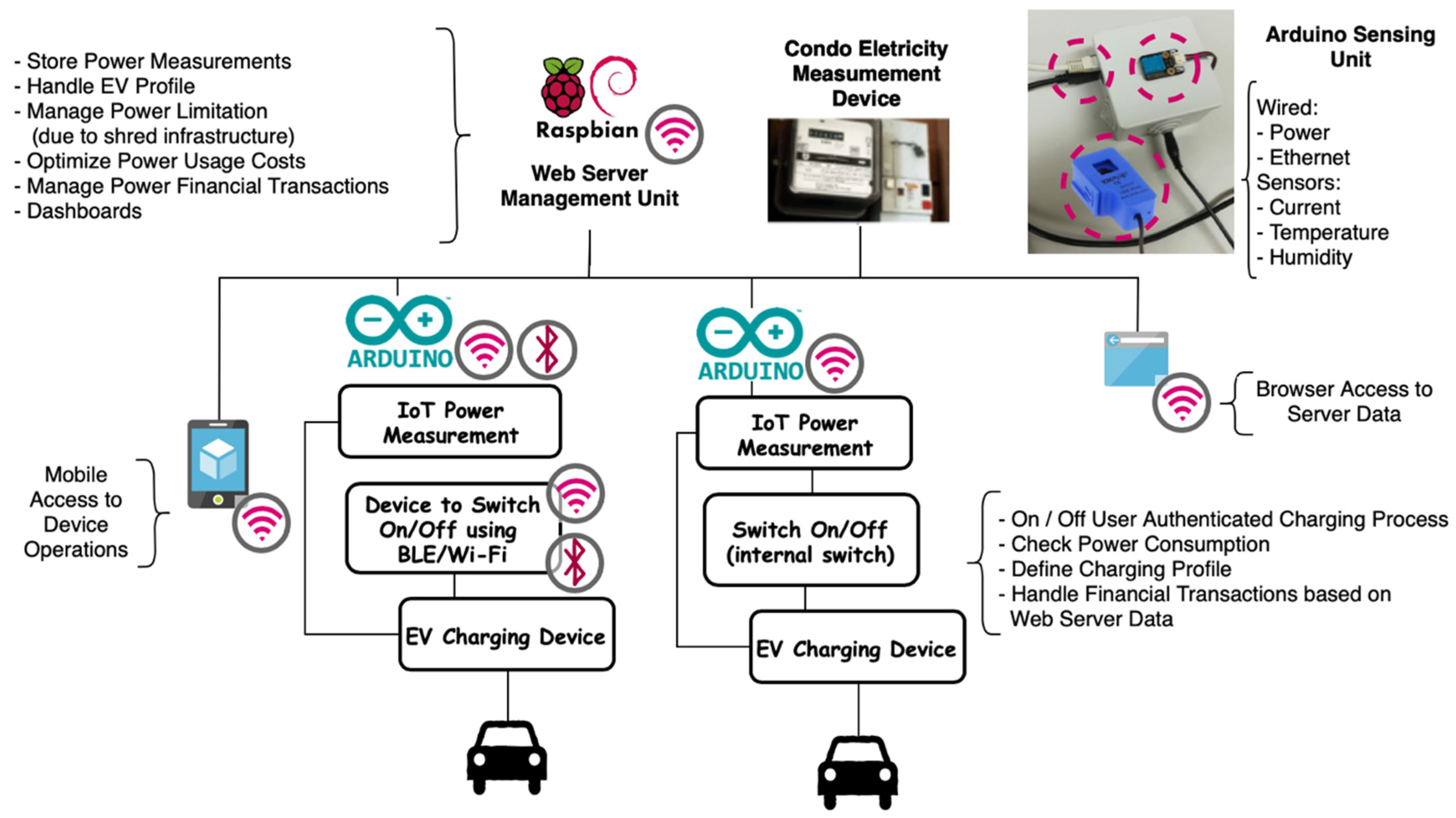
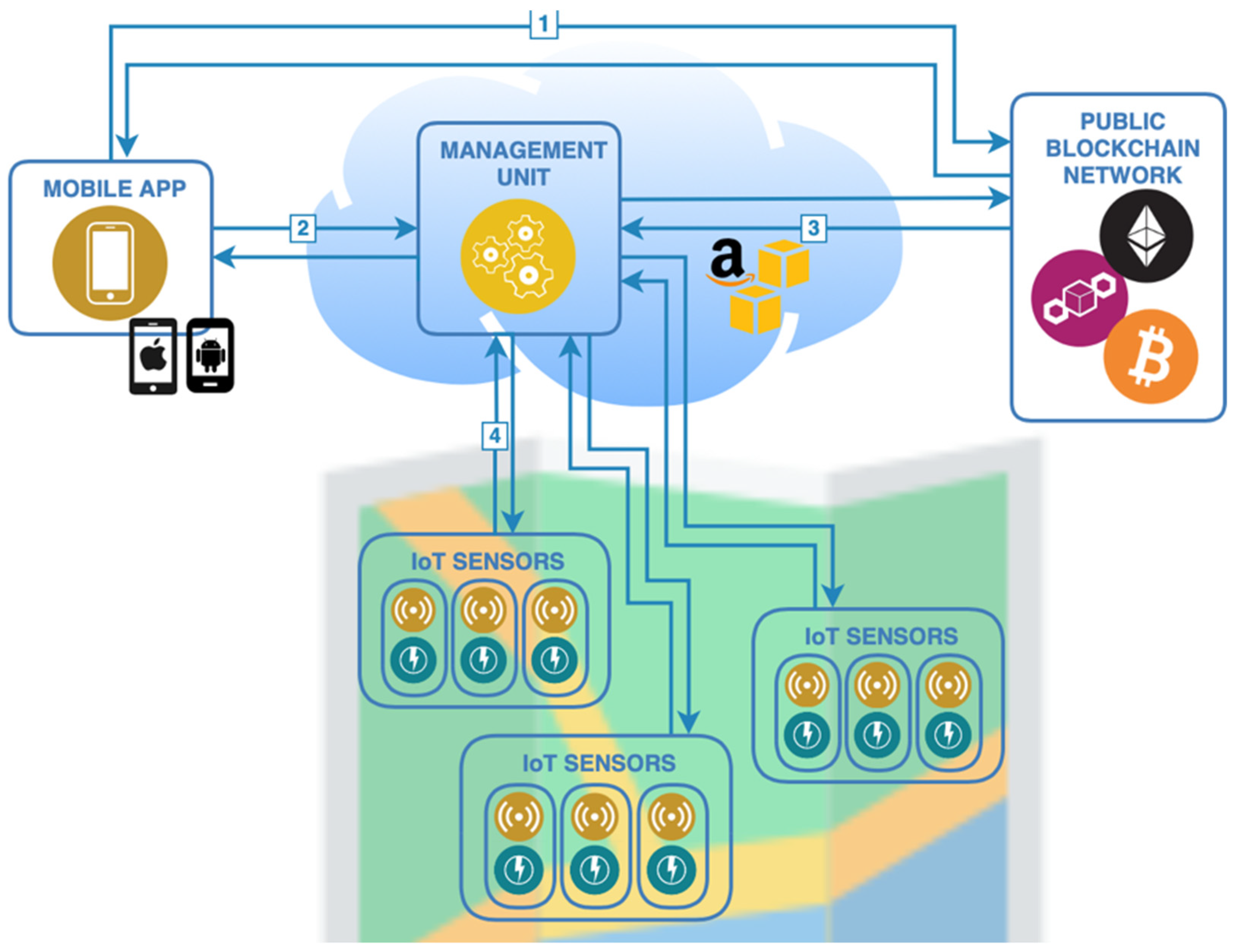
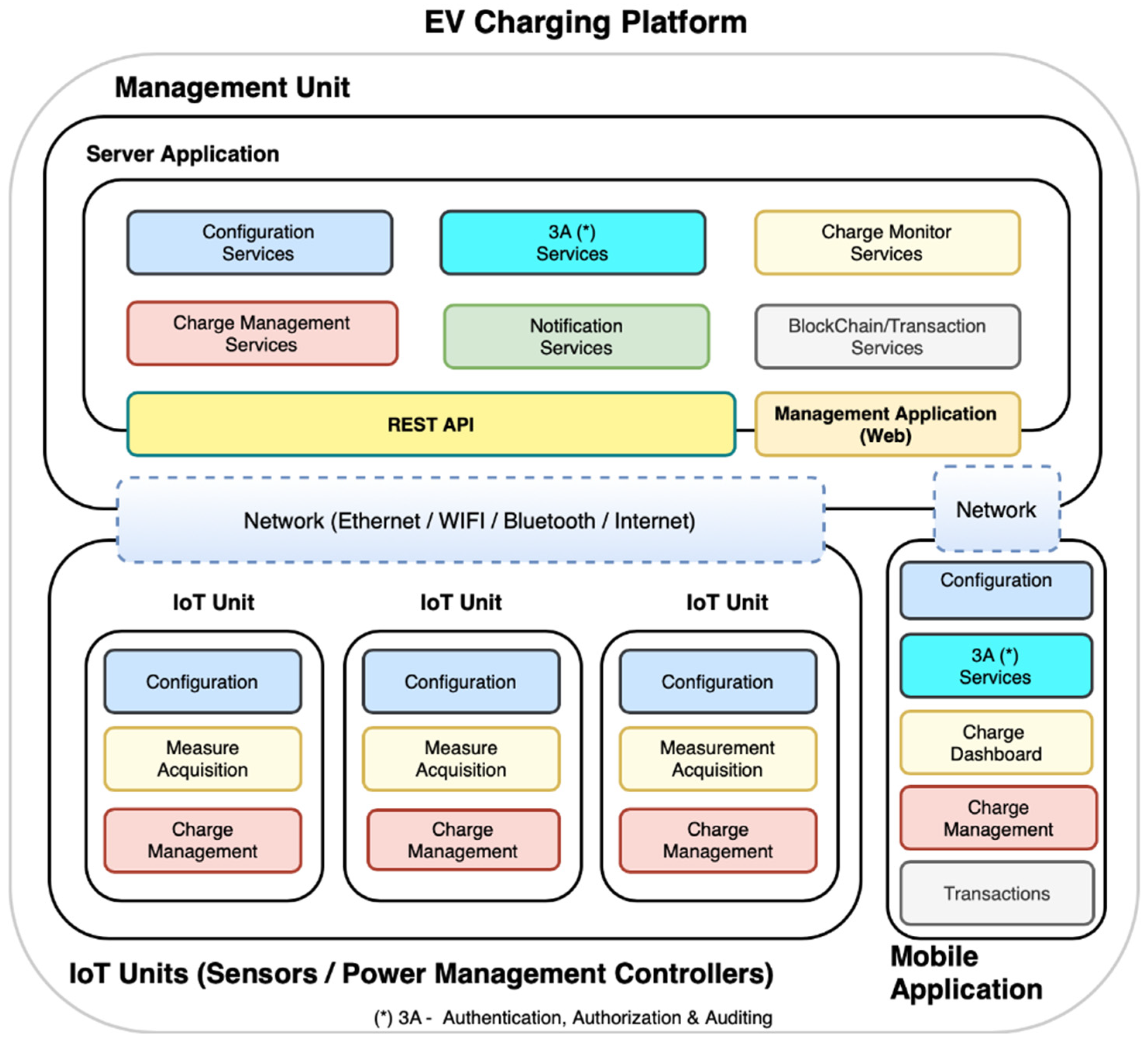

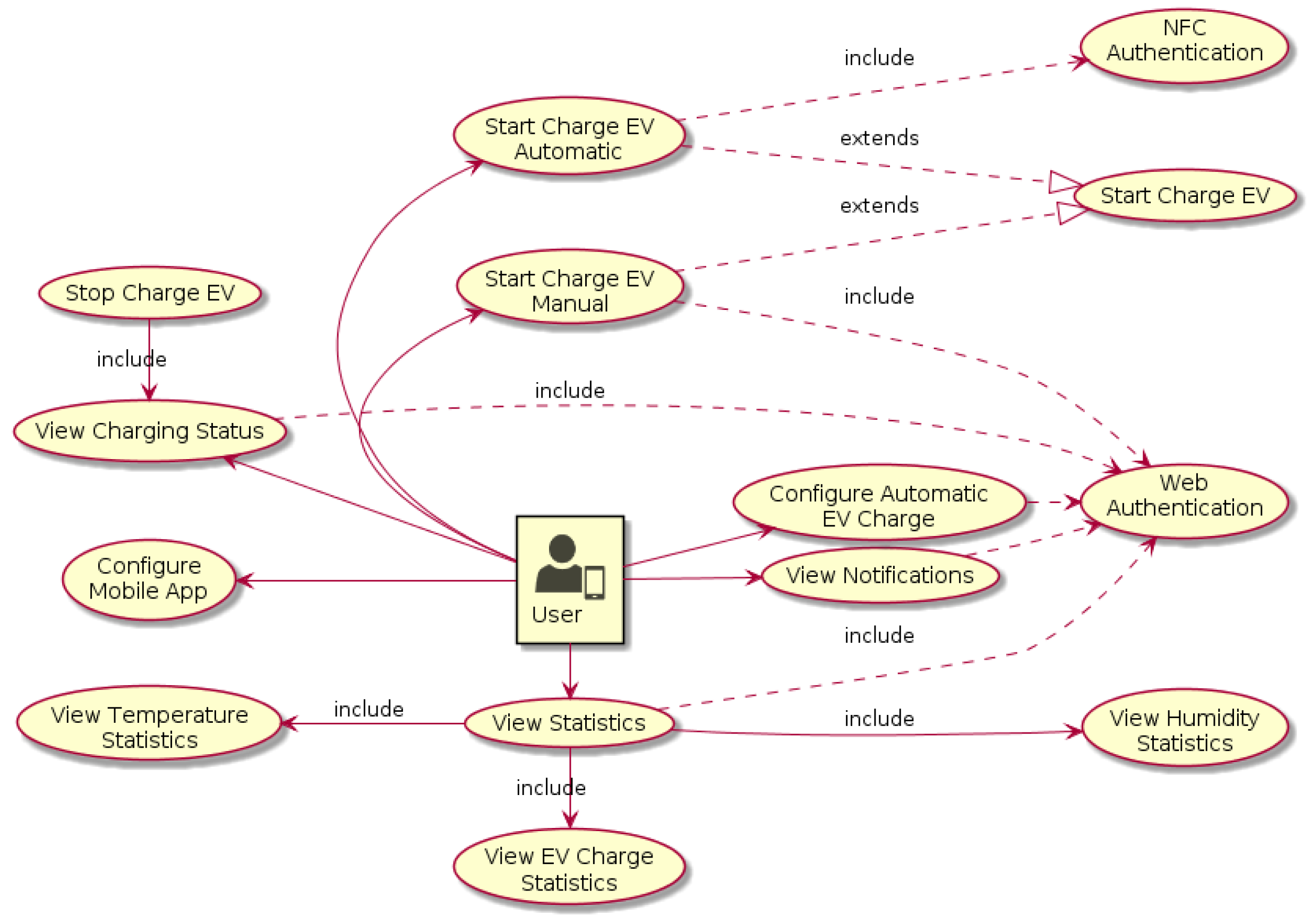
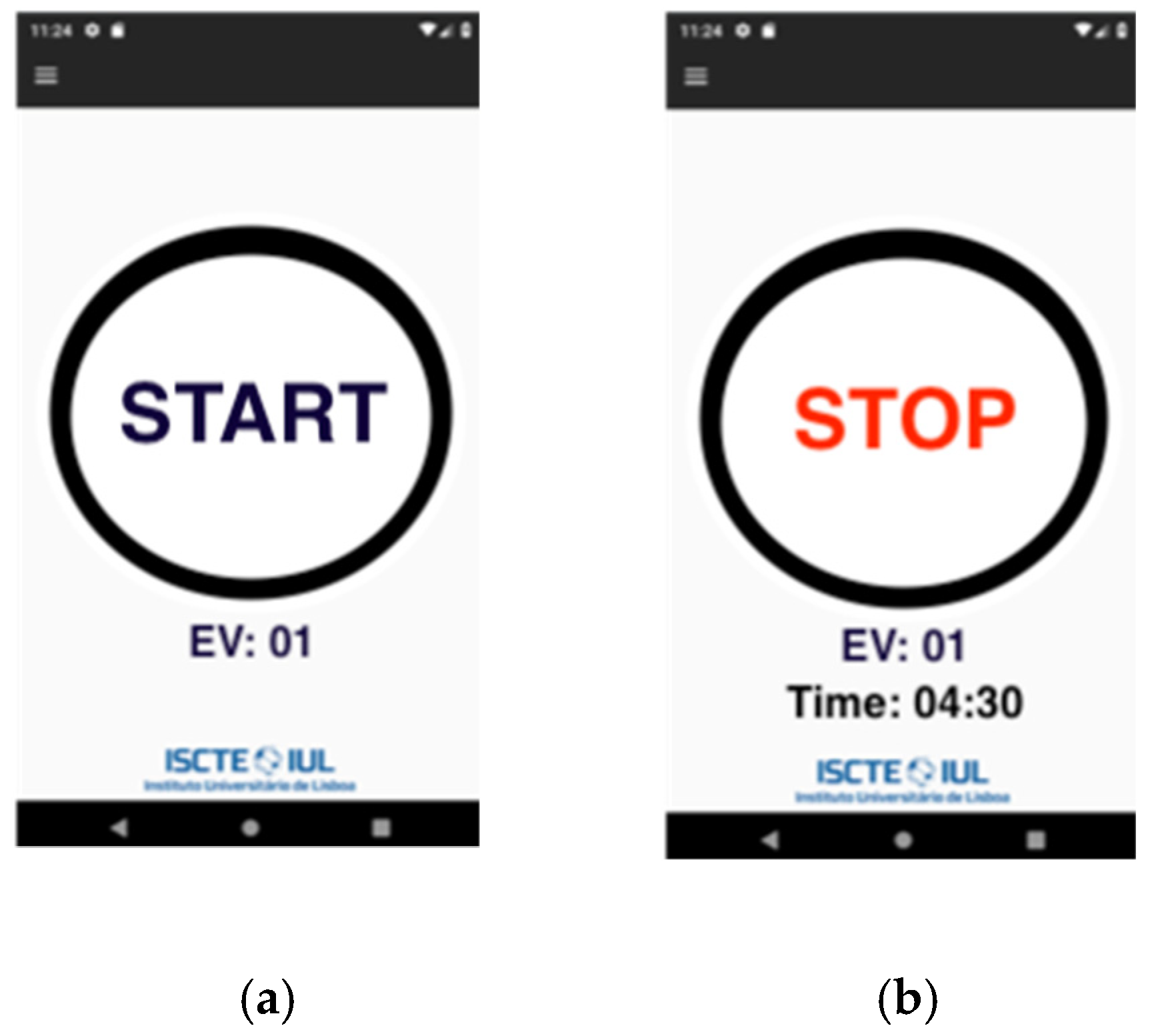

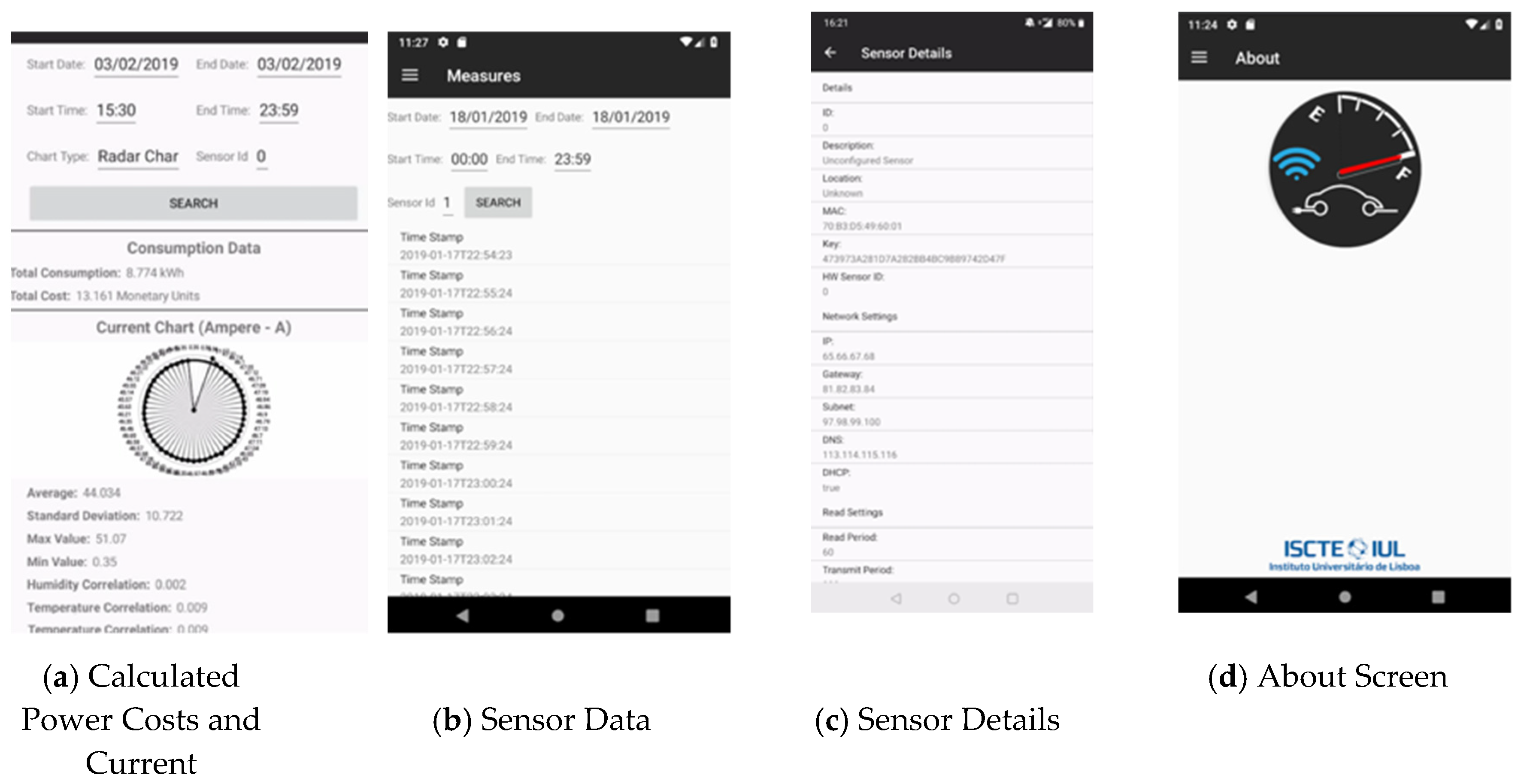
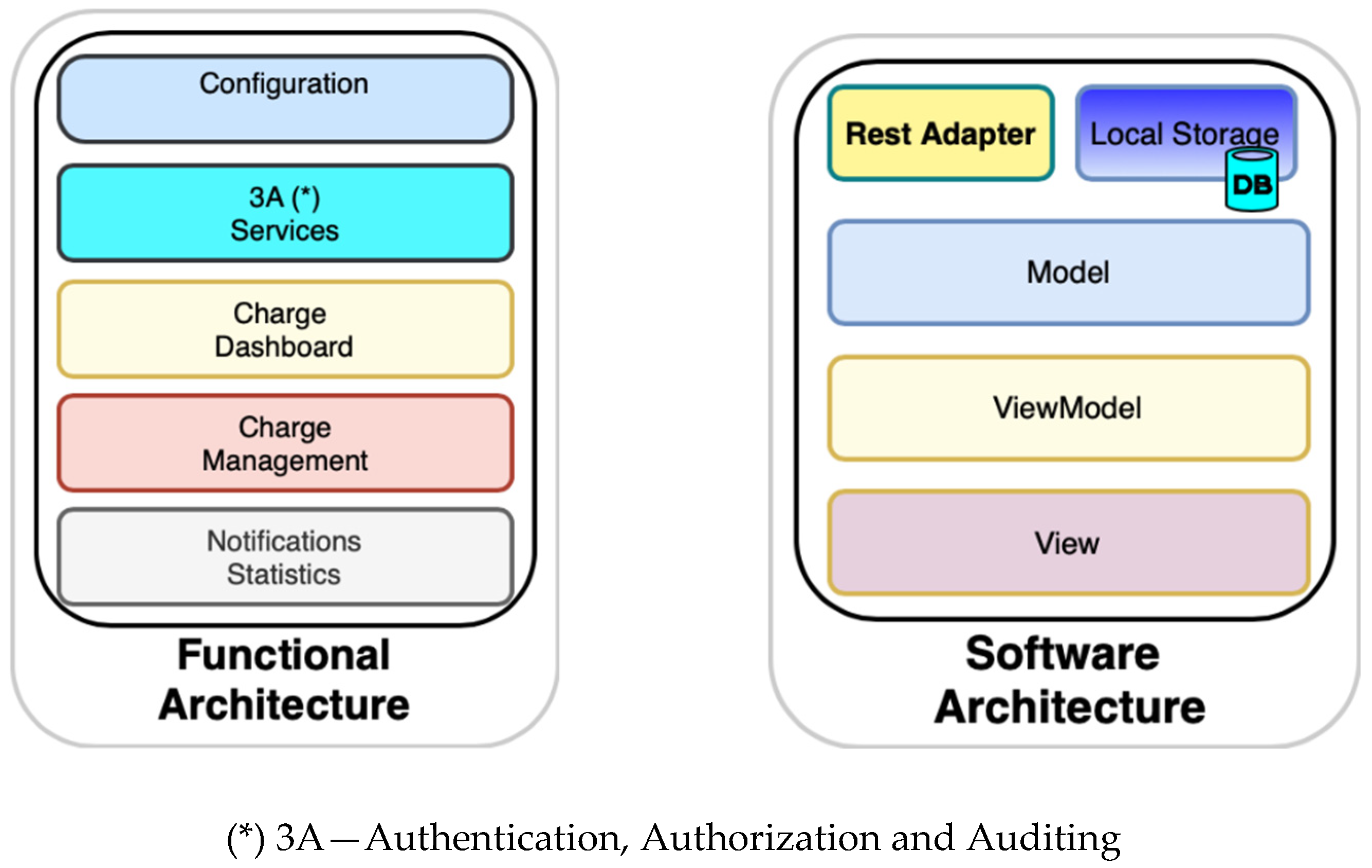
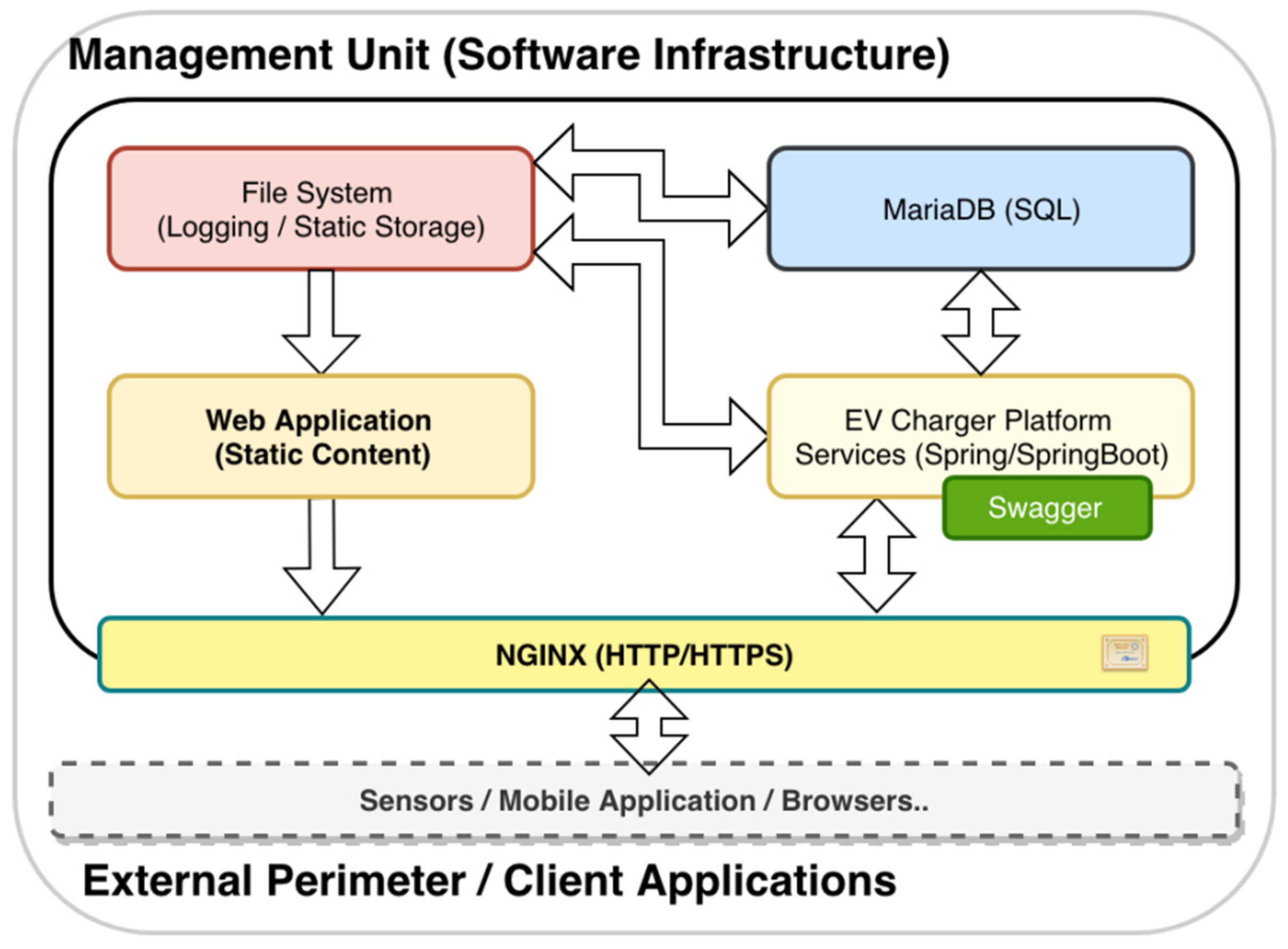
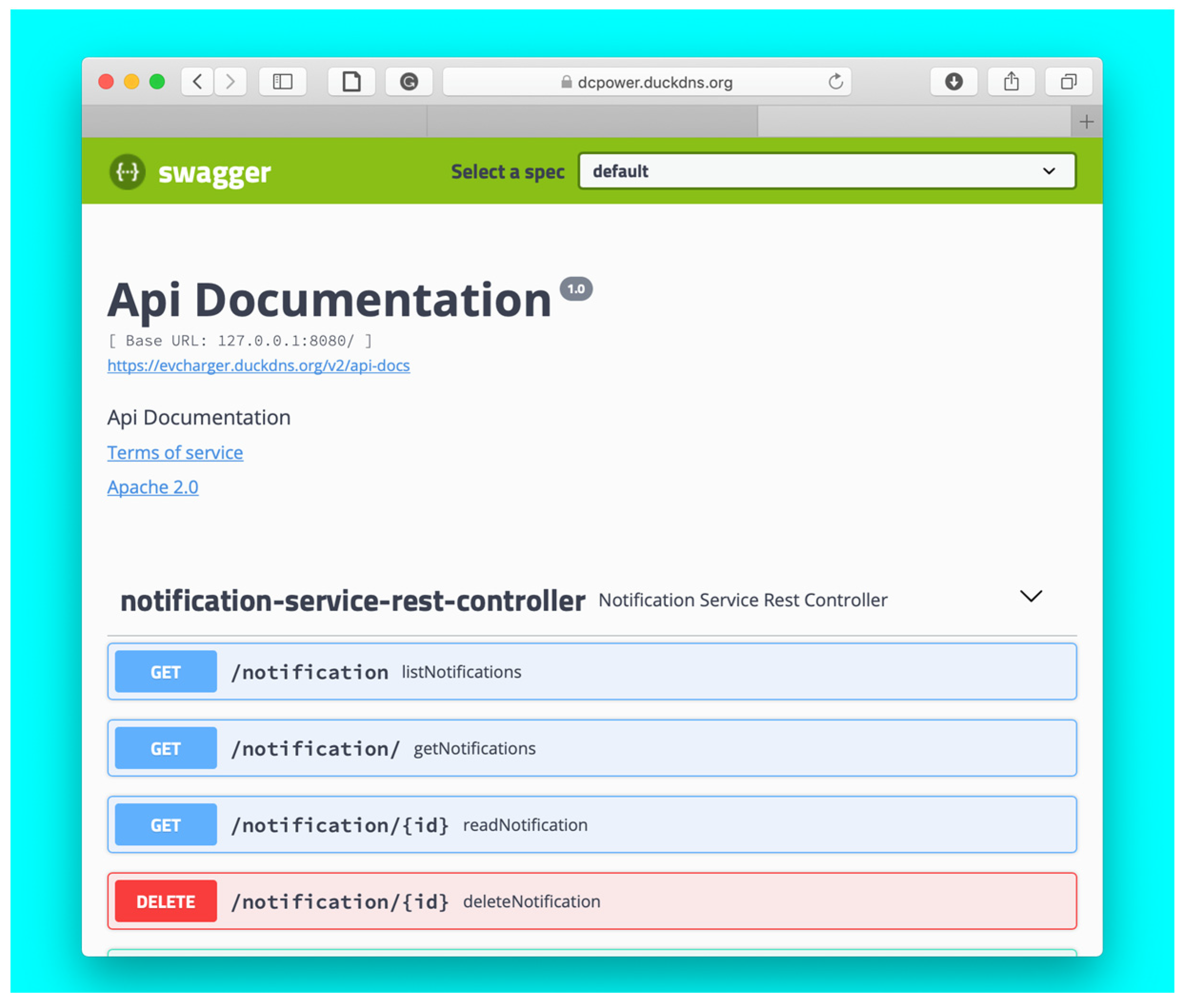
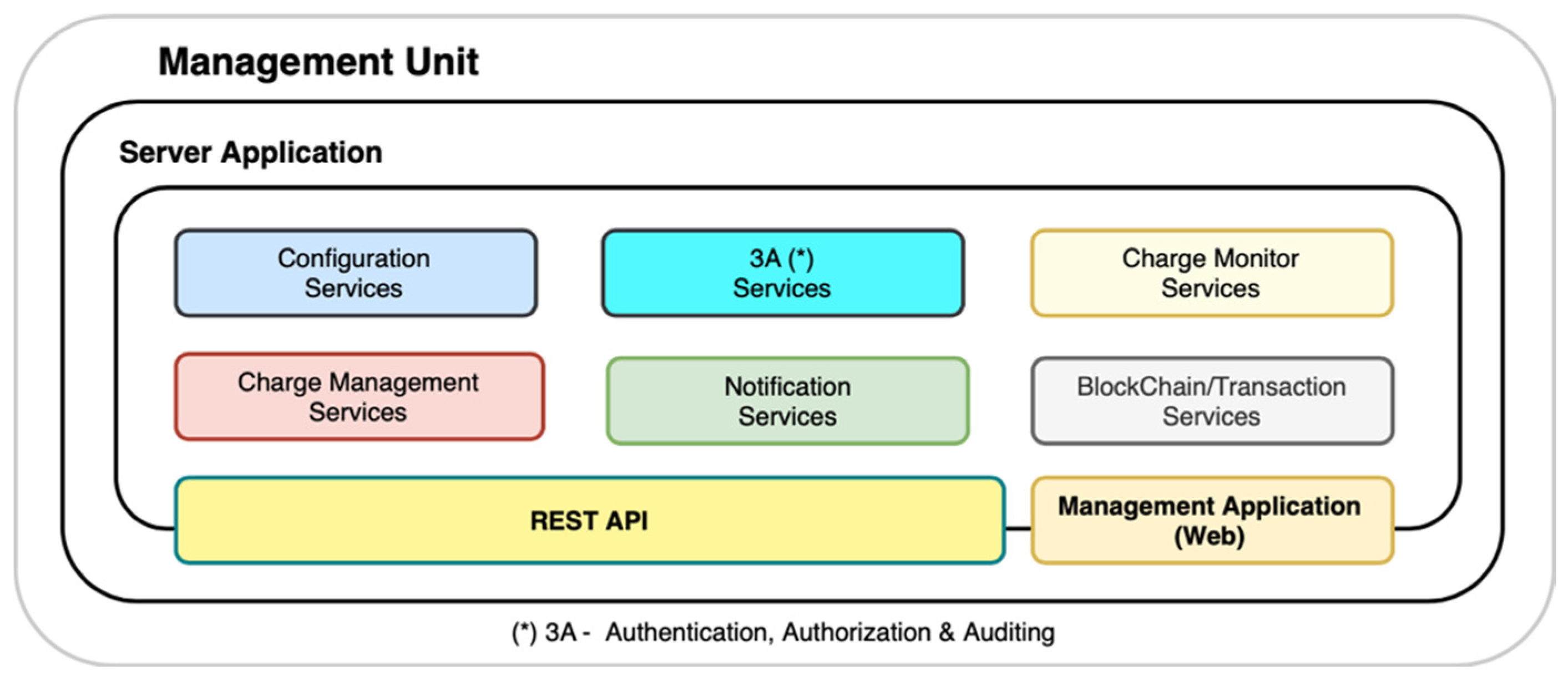
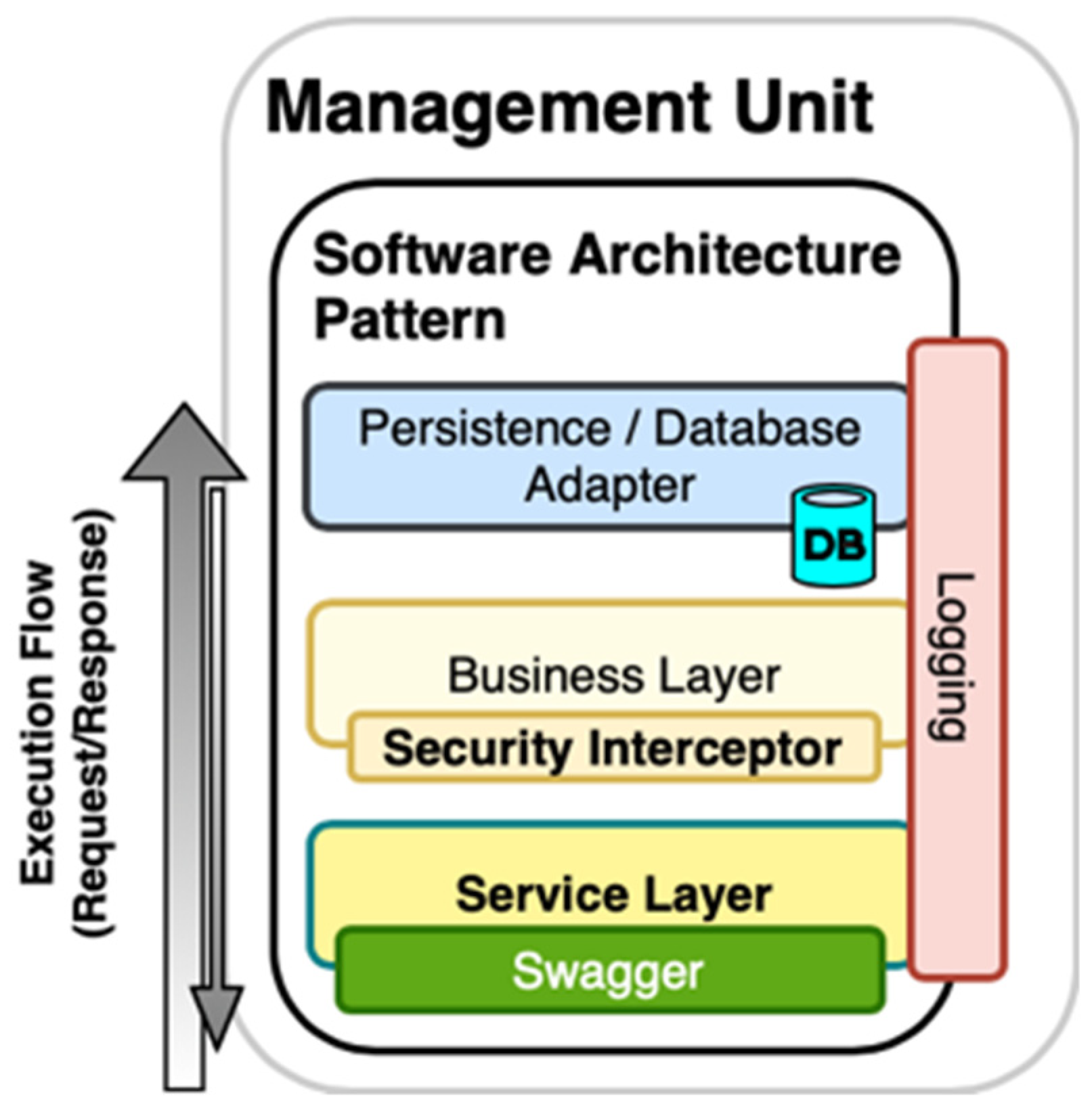
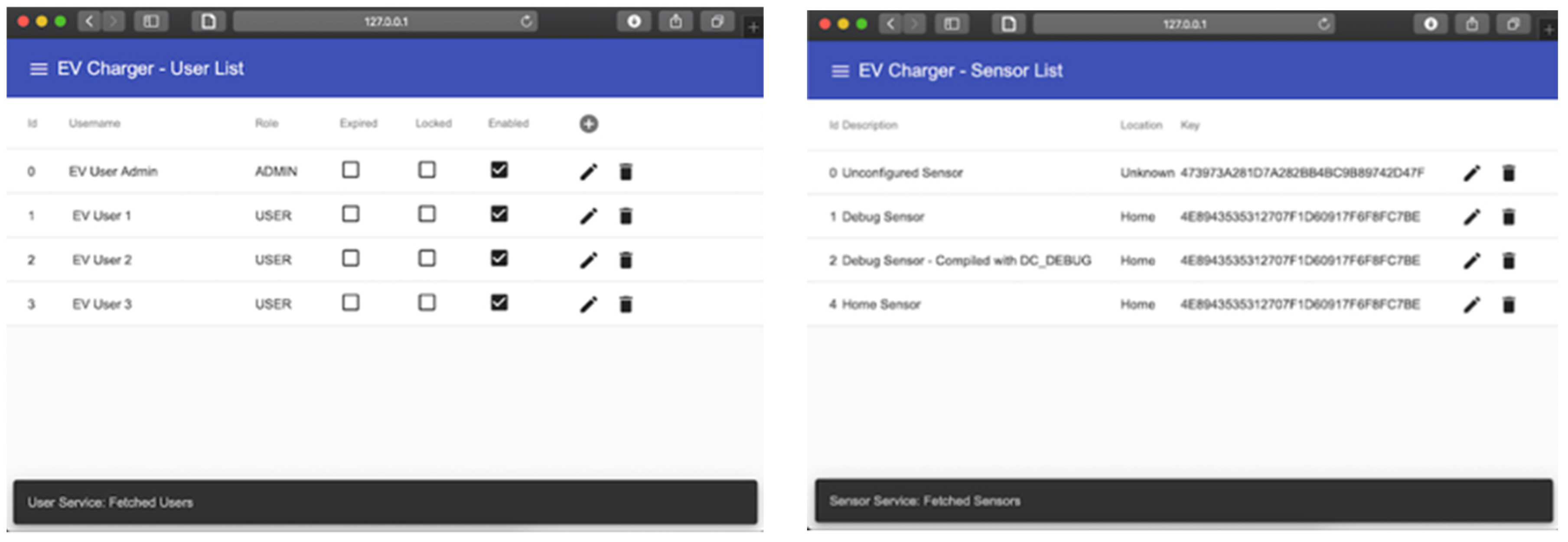
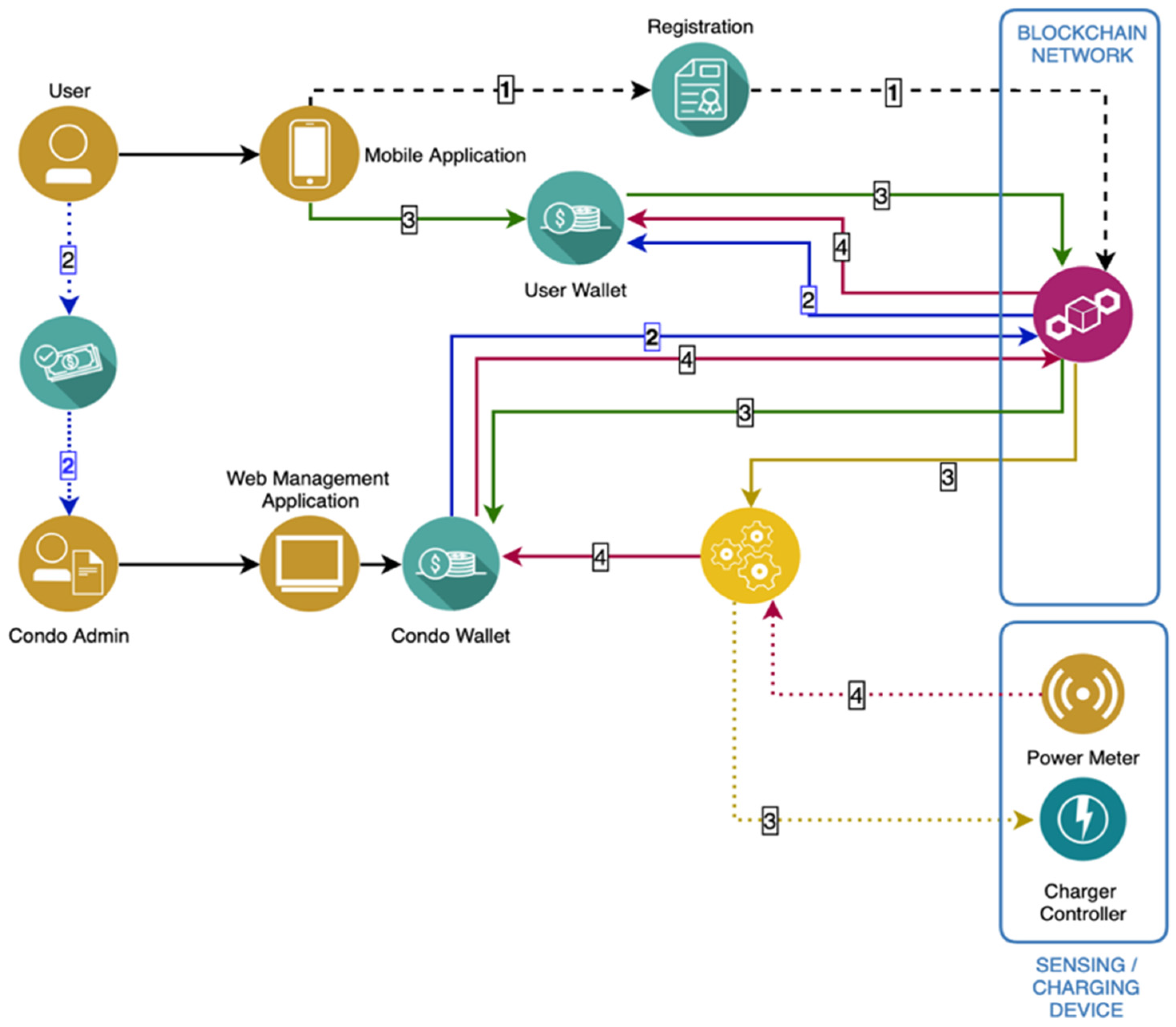
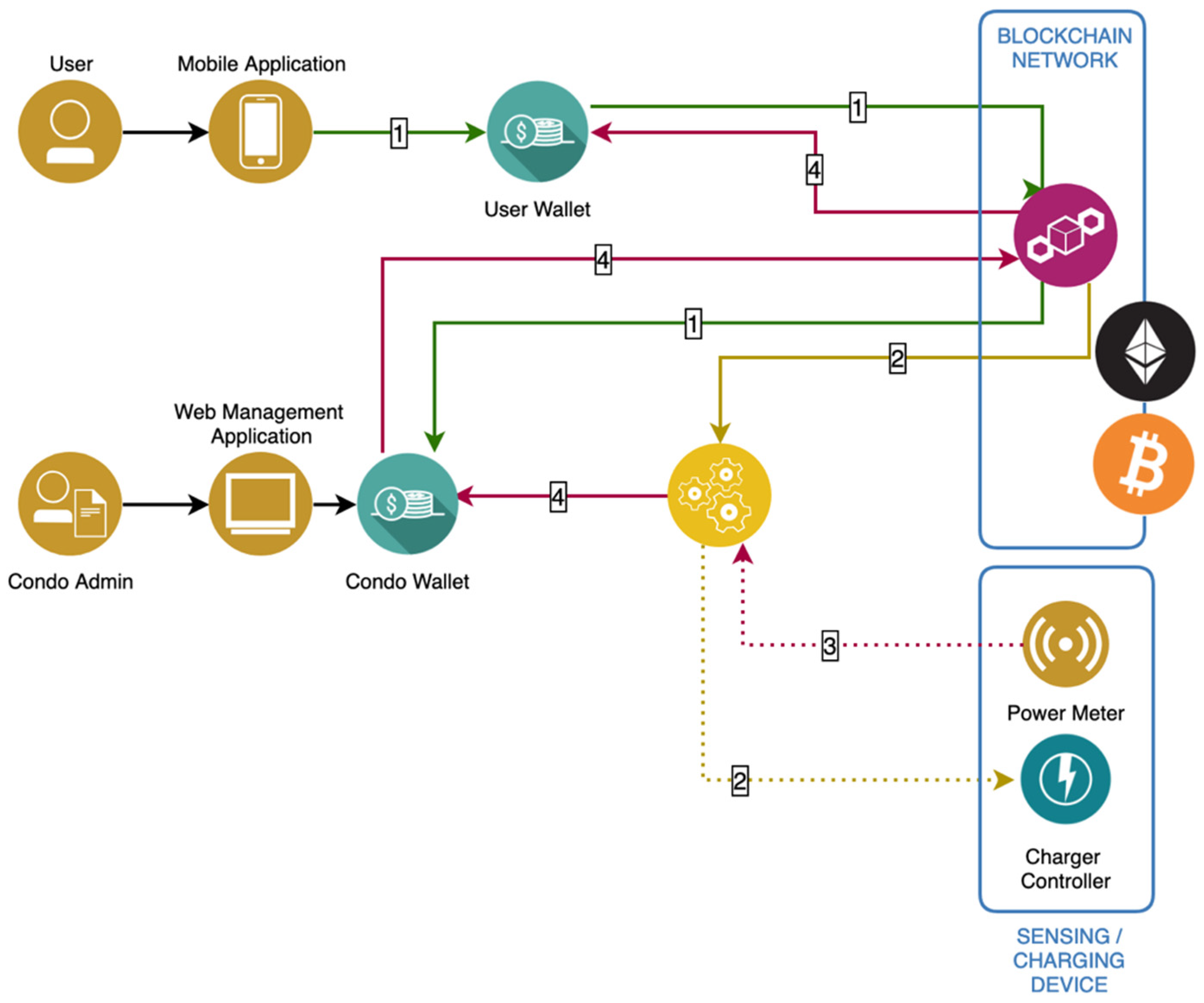
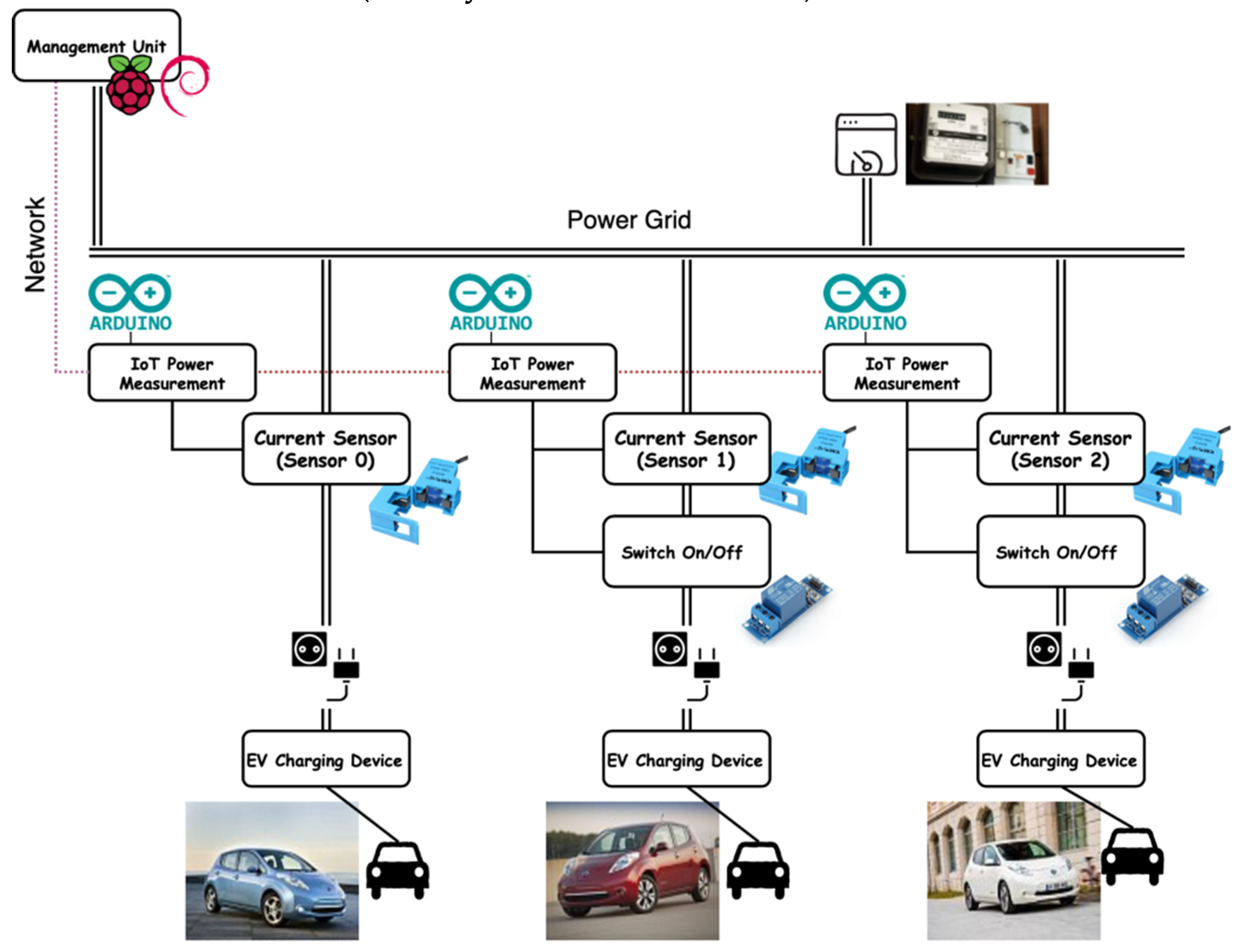
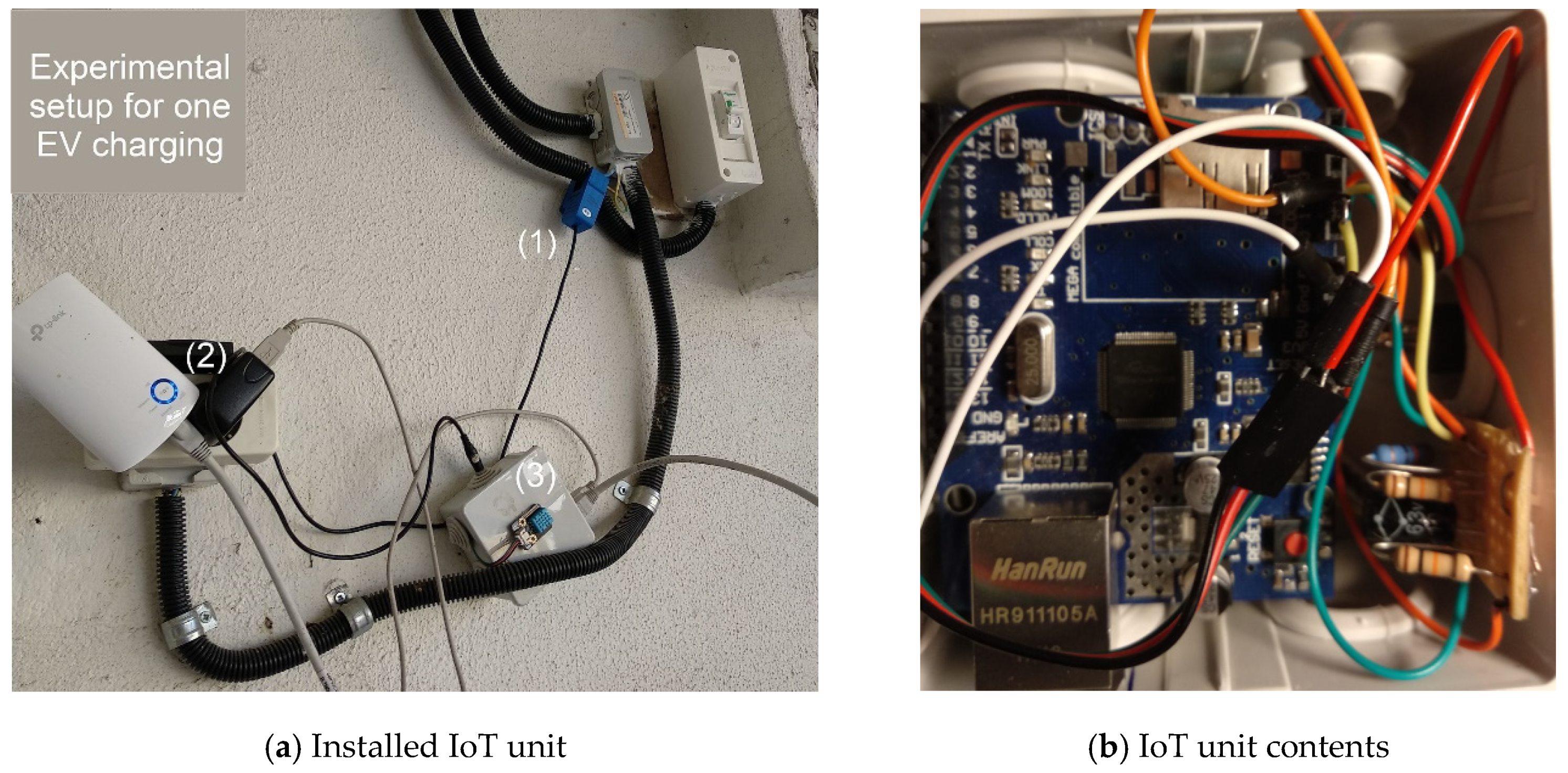
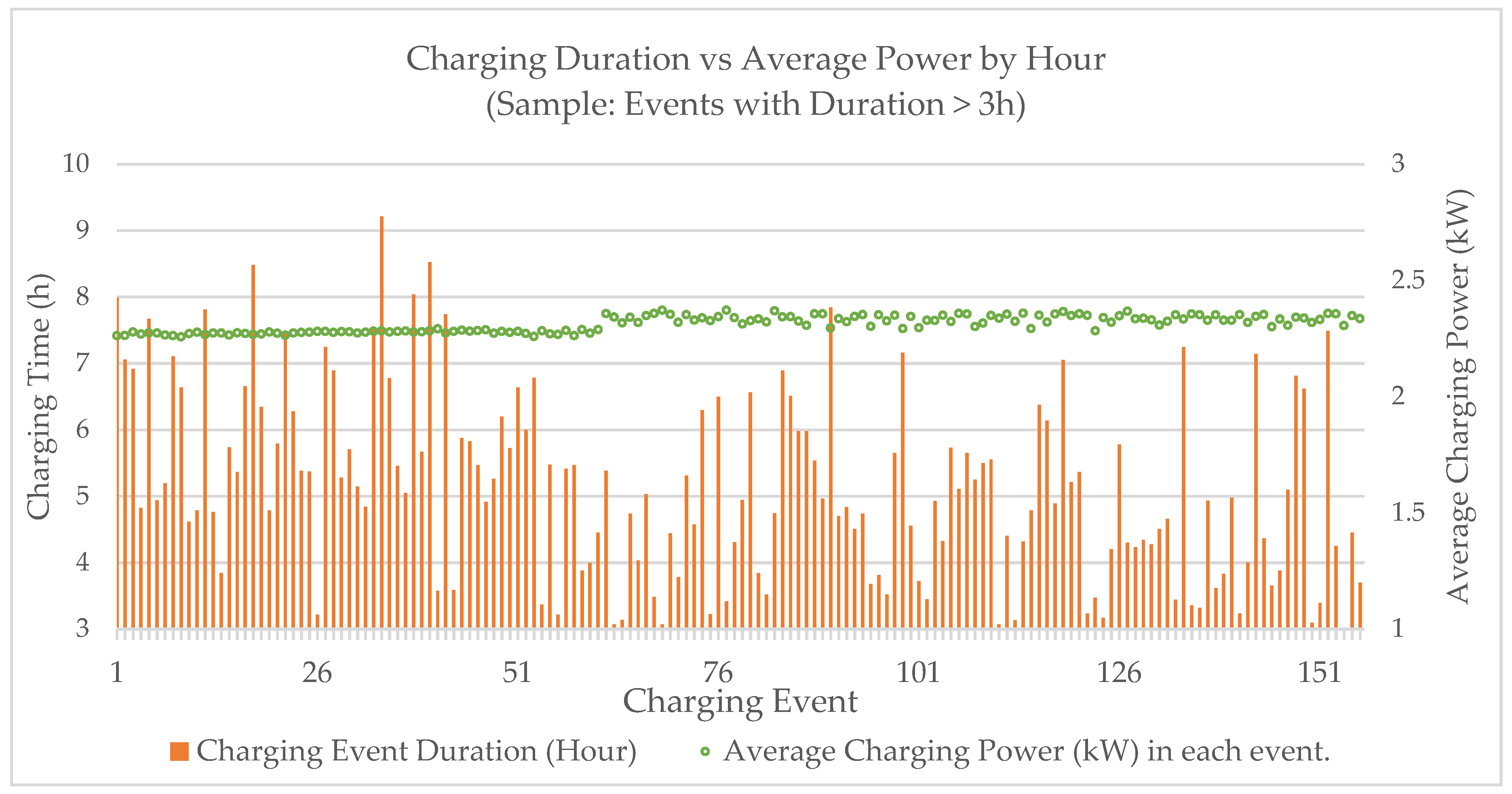
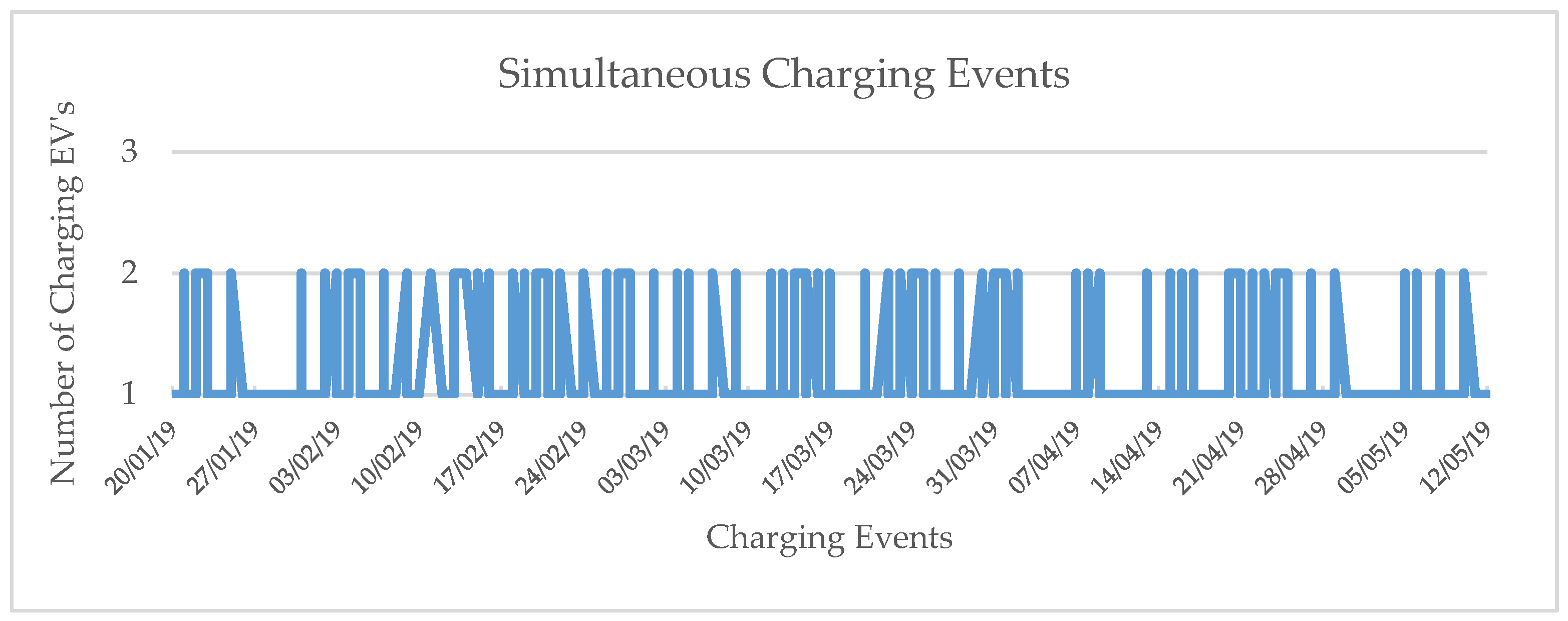

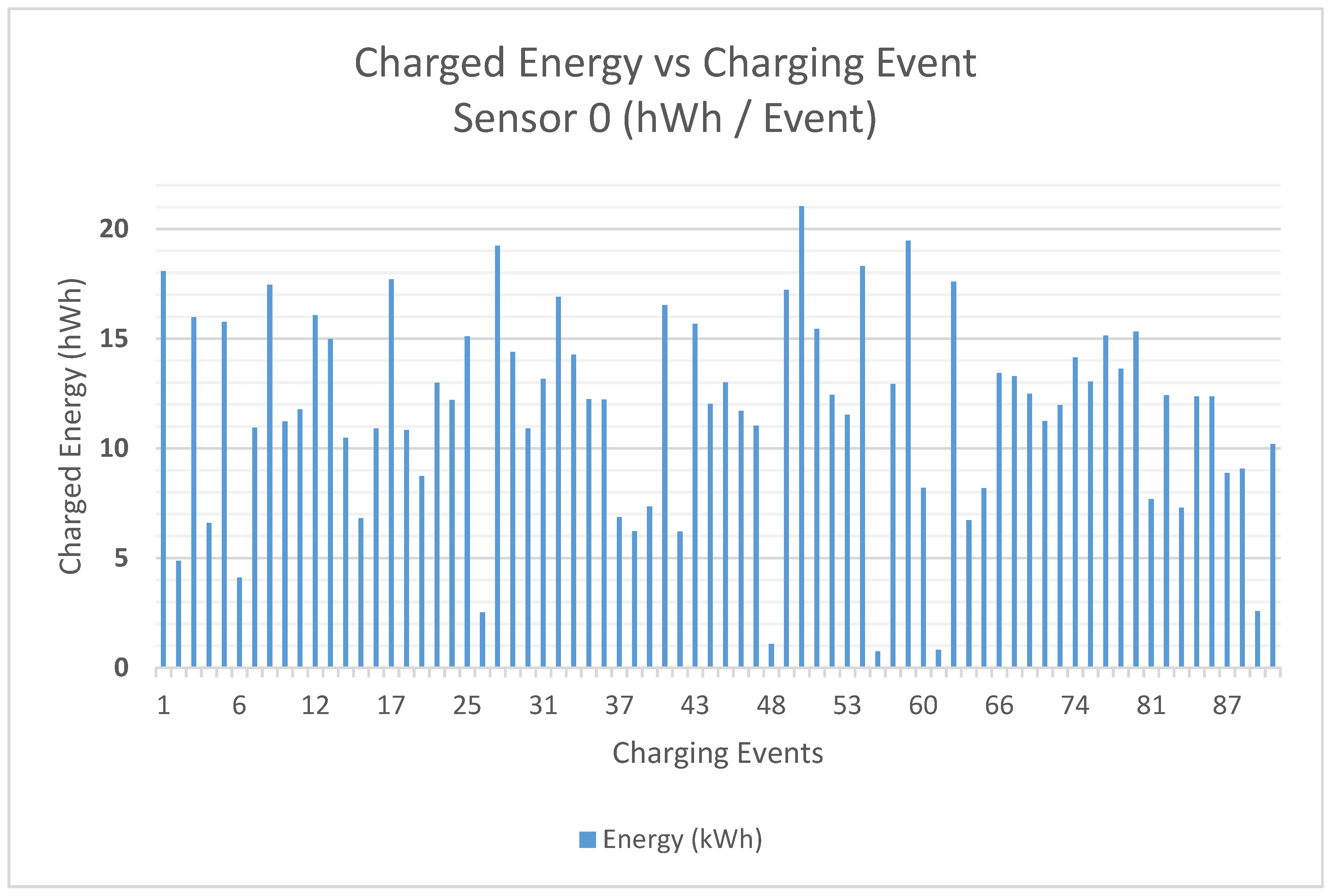
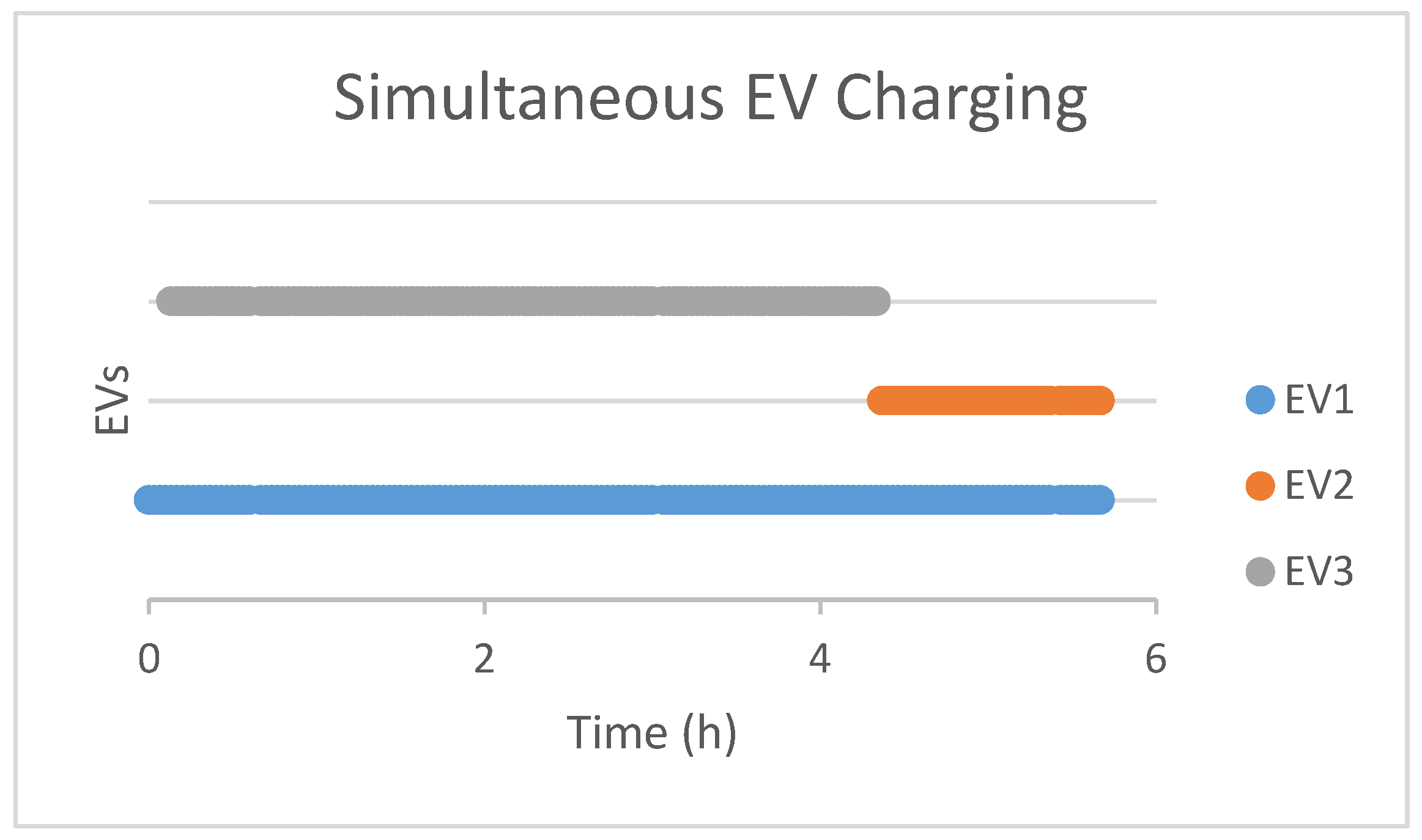
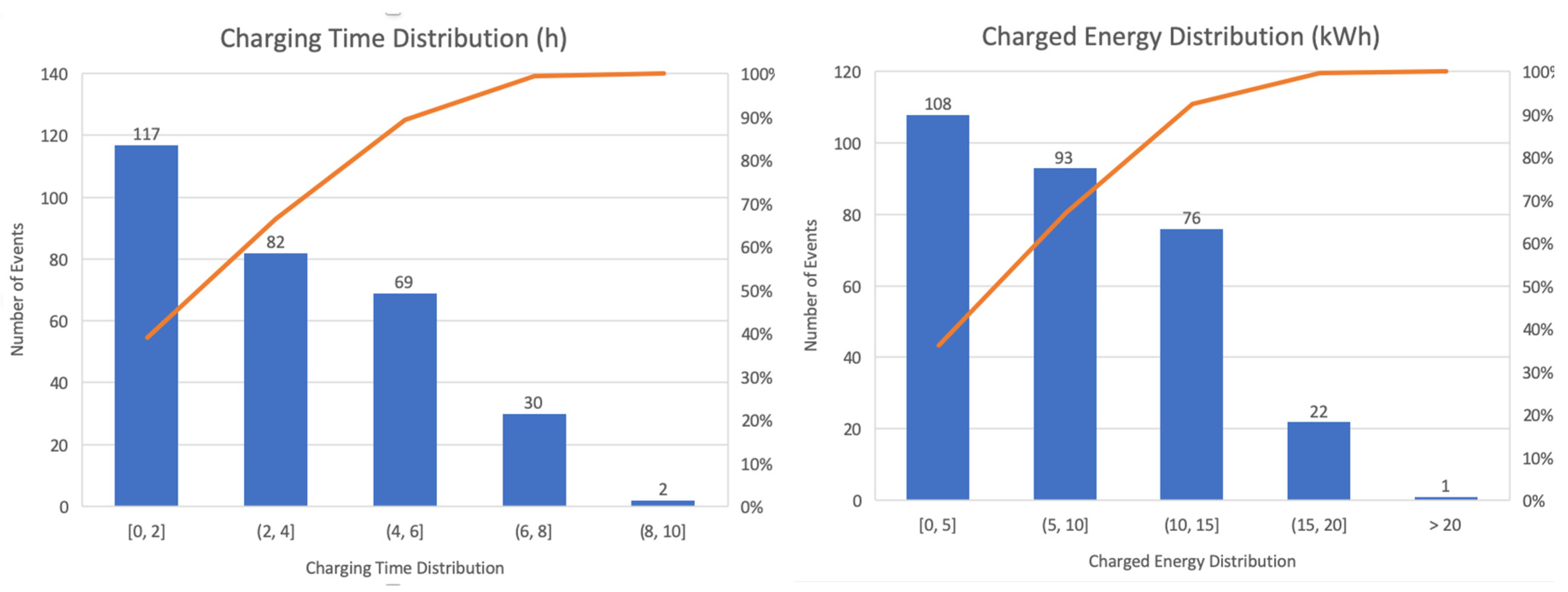
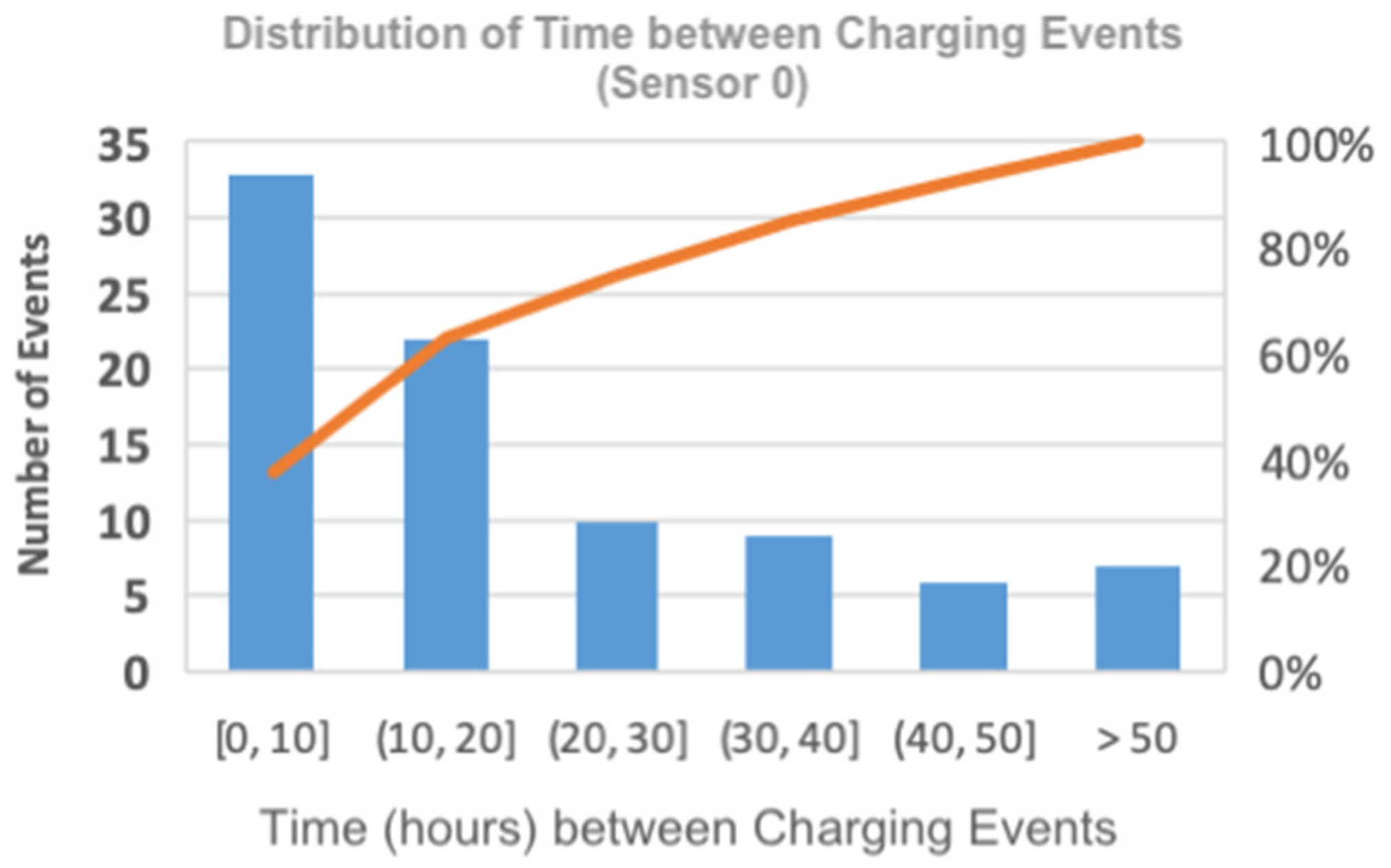
| Component Type | Device |
|---|---|
| Network (Shields) | Sparkfun ESP8266 (Wi-Fi) WIZnet’s W5100 (Ethernet) |
| Current Sensors | SCT-013-000 (non-intrusive) ACS712 20A (intrusive) |
| Power Switching (*) | SRD-05VDC-SL-C (generic network switch) |
| Temperature and Humidity | DHT11 |
| NFC RFID (**) Wireless Module | PN532 |
| Measure | Value |
|---|---|
| Data Samples | 450,000 1 |
| Total Time (hours) | 2700 |
| Start Date | 20 January 2019 |
| End Date | 12 May 2019 |
| Charging Data Samples | 63,000 |
| Charging Events | 300 |
| Total Charging Time (hours) | 1060 h (~40%) |
| Unused Charging Time (hours) | 1640 h (~60%) |
| Total Energy (kWh) | 2450 kWh 2 |
© 2019 by the authors. Licensee MDPI, Basel, Switzerland. This article is an open access article distributed under the terms and conditions of the Creative Commons Attribution (CC BY) license (http://creativecommons.org/licenses/by/4.0/).
Share and Cite
Martins, J.P.; Ferreira, J.C.; Monteiro, V.; Afonso, J.A.; Afonso, J.L. IoT and Blockchain Paradigms for EV Charging System. Energies 2019, 12, 2987. https://doi.org/10.3390/en12152987
Martins JP, Ferreira JC, Monteiro V, Afonso JA, Afonso JL. IoT and Blockchain Paradigms for EV Charging System. Energies. 2019; 12(15):2987. https://doi.org/10.3390/en12152987
Chicago/Turabian StyleMartins, Jose P., Joao C. Ferreira, Vitor Monteiro, Jose A. Afonso, and Joao L. Afonso. 2019. "IoT and Blockchain Paradigms for EV Charging System" Energies 12, no. 15: 2987. https://doi.org/10.3390/en12152987
APA StyleMartins, J. P., Ferreira, J. C., Monteiro, V., Afonso, J. A., & Afonso, J. L. (2019). IoT and Blockchain Paradigms for EV Charging System. Energies, 12(15), 2987. https://doi.org/10.3390/en12152987







